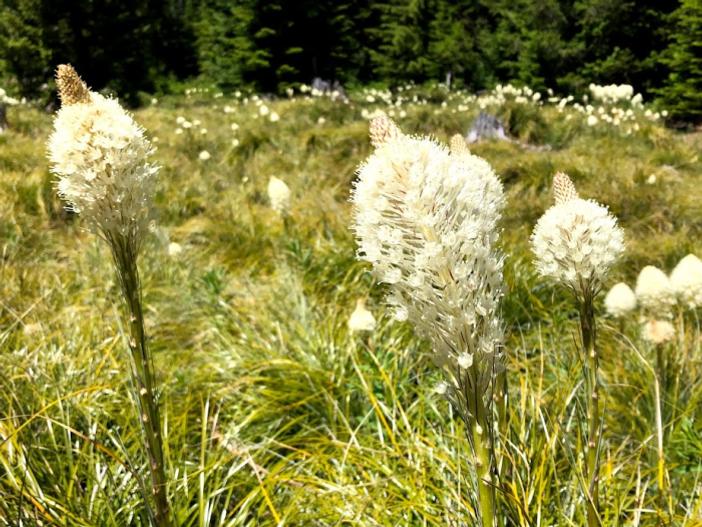Bear Grass
(Xerophyllum tenax)
Bear Grass (Xerophyllum tenax)
/
/

Photo by Easyscape
CC BY-SA 4.0
Image By:
Photo by Easyscape
Recorded By:
Copyright:
CC BY-SA 4.0
Copyright Notice:
http://creativecommons.org/licenses/by-sa/4.0/ | CC BY-SA 4.0






















































Estimated Native Range
Summary
Xerophyllum tenax, commonly known as Bear Grass, is an evergreen perennial herb native to mountainous regions, open coniferous forests, and alpine meadows in the Western United States. It typically grows to a height of 15–150 cm. Bear Grass forms dense tufts with long, narrow leaves that wrap around a short stem at ground level. The leaves are 30–100 cm long and 2–6 mm wide, presenting a dull olive green color with finely toothed edges. From late spring to early summer, it produces slightly fragrant white flowers on a tall stalk that bolts from the base, with blossoms densely clustered at the top like an upright club. The plant also bears small, tan-colored seeds that require a cold stratification period of 12 to 16 weeks to germinate.
Bear Grass is valued for its low maintenance and drought tolerance, making it suitable for xeriscaping and naturalistic plantings. Its striking flower stalks add vertical interest to gardens and are also used in floral arrangements. It thrives in full sun but can tolerate partial shade, and prefers well-drained soils. While generally pest-free, it can be susceptible to root rot if overwatered. Bear Grass is not known for aggressive roots or significant disease problems, but it may not compete well with more aggressive plants. It is not typically invasive when grown outside its native range.CC BY-SA 4.0
Bear Grass is valued for its low maintenance and drought tolerance, making it suitable for xeriscaping and naturalistic plantings. Its striking flower stalks add vertical interest to gardens and are also used in floral arrangements. It thrives in full sun but can tolerate partial shade, and prefers well-drained soils. While generally pest-free, it can be susceptible to root rot if overwatered. Bear Grass is not known for aggressive roots or significant disease problems, but it may not compete well with more aggressive plants. It is not typically invasive when grown outside its native range.CC BY-SA 4.0
Plant Description
- Plant Type: Herb
- Height: 2-3 feet
- Width: 2-3 feet
- Growth Rate: Rapid
- Flower Color: White
- Flowering Season: Summer, Fall
- Leaf Retention: Evergreen
Growth Requirements
- Sun: Full Sun
- Water: Low
- Drainage: Fast, Medium
Common Uses
Bank Stabilization, Border Plant, Edible*Disclaimer: Easyscape's listed plant edibility is for informational use. Always verify the safety and proper identification of any plant before consumption., Fire Resistant, Low Maintenance, Salt Tolerant, Showy Flowers
Natural Habitat
Mountainous regions, open coniferous forests, and alpine meadows
Other Names
Common Names: Indian Basket Grass, Soap Grass, Quip-Quip, Western Turkey-Beard, Elk Grass, Beargrass, Bear-Grass, Squaw Grass, Pine Lily, Xérophylle
Scientific Names: , Xerophyllum tenax, Xerophyllum douglasii, Helonias tenax, Melanthium spicatum, Xerophyllium tenax,
GBIF Accepted Name: Xerophyllum tenax (Pursh) Nutt.